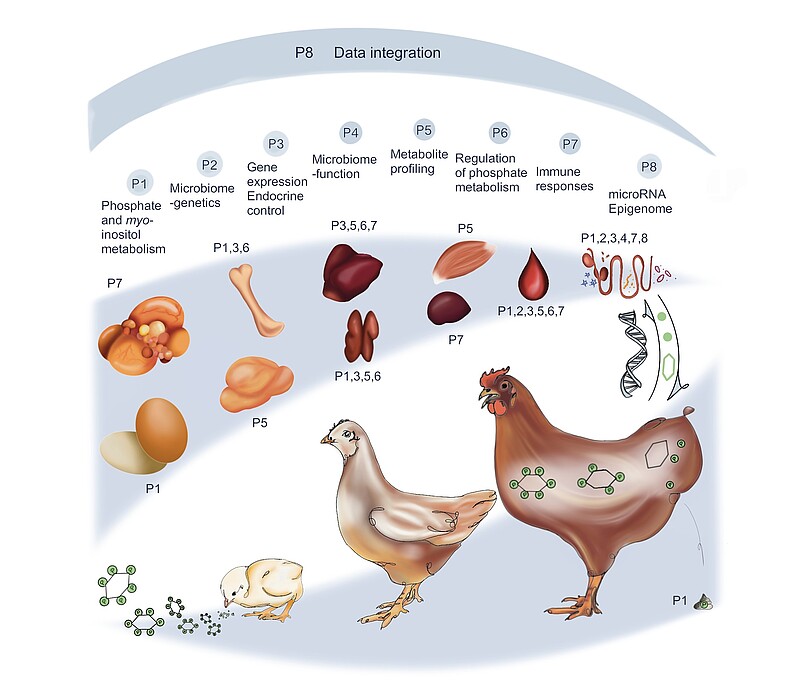Coordination project
Markus Rodehutscord

In the renewal period, we continue testing three overarching hypotheses based on the results of the first period:
1.) phosphorus (P) utilisation by laying hens and myo-inositol metabolism are driven by the bird’s genetic/epigenetic background and the active fraction of the intestinal microbiome, enabling targeted breeding for improved P utilisation;
2.) changes in microbiome, depending on age and feeding, contribute to formation of inositol phosphates and myo-inositol and subsequent physiological and immunological functions;
3.) key physiological features can be identified to scale up the phenotyping of inositol phosphate and myo-inositol metabolism in larger populations.
We will conduct experiments using two laying hen strains with a high degree of genetic differentiation. Experiments involve variable dietary supply of free myo-inositol, P and calcium. Projects of the Research Unit obtain their material of investigation from those experiments. Samples of gastrointestinal content, blood, and tissues are analysed using genomic, epigenomic, transcriptomic, proteomic, metabolomic, immunological, microbiological, physiologic, and chemical methods. Besides hypotheses testing in each project, the results will be holistically used in biological network analyses.
We aim to identify different biological strategies of P homeostasis and myo-inositol metabolism at onset and peak of egg laying in two genetically contrasting laying hen strains. Identification of biomarkers may enable for the consideration of P metabolism in breeding strategies and contribute to a more sustainable management of natural resources and improved animal health.

